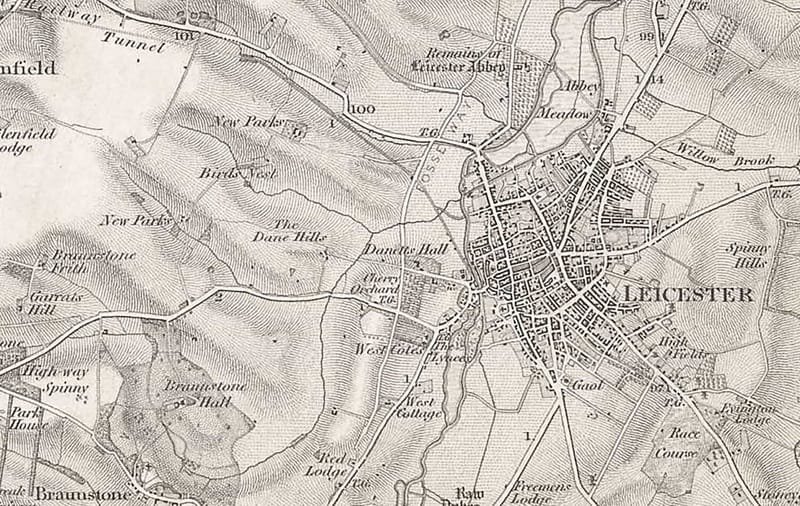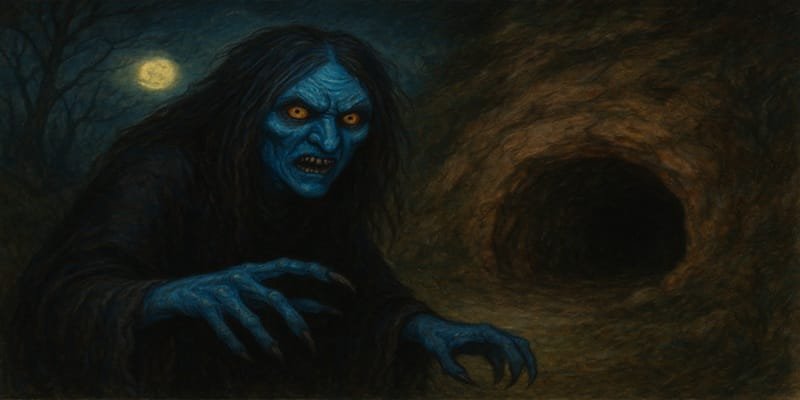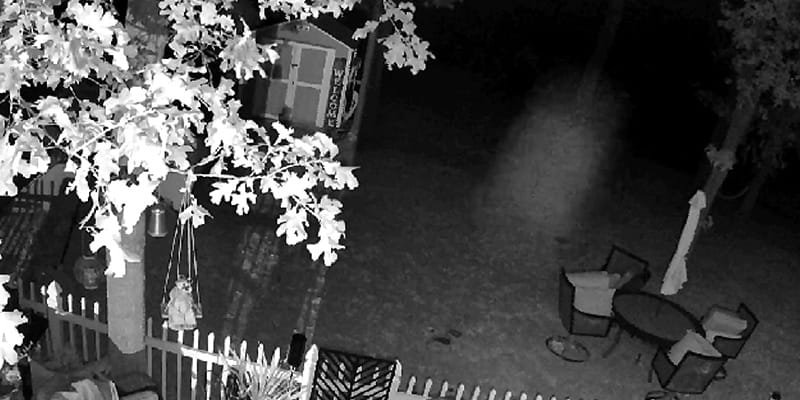The Tale of Black Annis: Leicestershire’s Blue Faced Witch.
I had never heard of the legend of a blue faced witch named Black Annis who once lived in a cave in Leicestershire, UK. Not until a friend of mine, who is a children’s author, spoke about Black Annis and how it gave him inspiration to include a similar character in his new book.
So for those of you who have also never heard of Black Annis, this is her story.
‘Black Annis, the blue faced hag of the Dane Hills’. Her story is shrouded in mystery and myth, it blends centuries of local superstition, pagan echoes, and the human fear of what lurks in the dark.
Though very few today claim to have seen her, her legend remains one of Britain’s most enduring tales of folklore and supernatural.
Origins of the Legend
The earliest known references to Black Annis date back to the 18th century, though her story may stem from far older pagan roots. Some folklorists believe she was once a Celtic goddess or a spirit of the land, transformed over time by Christian storytellers into a monstrous blue faced witch while others suggest that her tale may have been used as a scare story to keep children from wandering too far away from home after dark.
Black Annis was said to inhabit a cave that was carved into the sandstone cliffs of the Dane Hills, just west of Leicester.
The cave, known locally as Black Annis’s Bower, was reputedly lined with the skins of her victims. From inside the grim cave, she would emerge after sunset to prowl the countryside, preying upon livestock and young children.

Black Annis waiting in the shadows
The Horrors of the Blue-Faced Witch
Descriptions of Black Annis are terrifyingly. She is said to have had blue skin, iron claws, and fang like teeth, her face was a grotesque mask of fury and hunger. According to local folklore, she would creep around in the shadows at night, climbing trees or lurking near farms just waiting on her prey.
Children who strayed too far away from home were warned that Black Annis would snatch them up, devour them, and then hang their skins upon the walls of her cave to tan them before wearing them as part of her garments. Her appetite for flesh and blood was legendary, and her wailing cries were said to echo across the hills on stormy nights.
In some versions of the tale, villagers would lock their doors and hang herbs or charms by their windows on winter evenings, hoping it to ward off the witch’s approach. Cattle were driven into barns at dusk and children were tucked firmly into bed long before darkness fell.
Black Annis’s Bower and the Dane Hills
The supposed site of Black Annis’s Bower became a point of fascination for locals and travellers. While the original cave was said to have been partially destroyed during quarrying in the 19th century, legends persist that the witch’s spirit still haunts the area.
There was once a local ritual tied to her story. During the ancient festival of Beltane (May Day), a hare, the animal sometimes associated with Annis, would be hunted through the streets of Leicester. Some scholars have suggested that this may have symbolized the triumph of spring and light over the dark, the winter-bound spirit of Black Annis.
Interestingly though, the old name “Black Annis’s Bower Close” appeared on early maps of the area, confirming that her legend was deeply rooted in the geography and identity of Leicester.

Map of the Dane Hills area in Leicester, 1835
Pagan Goddess or Bogeywoman?
Folklorists have long debated the origins of Black Annis. Some connect her to Anu or Danu, the ancient Celtic mother goddess of the earth, whose name may have inspired “Annis.”
Over time though, as pagan beliefs were demonised by Christian storytellers, benevolent gods like Anu could have been recast as terrifying hags, embodiments of fear and chaos rather than fertility and protection.
Others argue that Black Annis was simply just a bogeywoman that was invented to scare children into obedience. A monstrous figure embodying society’s fears of the wilderness and the unknown, with her blue skin and cave dwelling nature symbolising death and decay, while her iron claws hint at her inhuman power.
Whatever her origins are, Black Annis has become an archetype of the British witch figure, wild, untamed, and existing on the fringes of both civilisation and morality.
Modern Sightings and Cultural Legacy
Though no credible modern sightings of Black Annis have been reported, her name lingers in Leicestershire’s folklore.
The Dane Hills area, now a large developed housing estate, still carries whispers of her legend and ghost tours in Leicester often recount her chilling tale.
She has also left her mark on popular culture. Authors, artists, and occult enthusiasts continue to draw inspiration from her, a symbol of the old dark magic that once haunted England’s rural landscape. Some modern witches even reclaim her image as a misunderstood goddess or nature spirit, representing the shadow side of the feminine divine.
So if you find yourself walking through Leicestershire on a stormy night, and the wind is howling through the trees then take care. For in the dark, legend says that Black Annis still waits, watching with her blue face and iron claws, waiting for those who stray too far into the dark.
At the beginning of this article, I mention that a friend of mine told me about Black Annis, and that friend is a children’s author. Their new book, if you have young children and want to take a look at the book, is call The Mice of Newcastle.
Has this article inspired you to visit a paranormal location? Plan and book your visit here.









